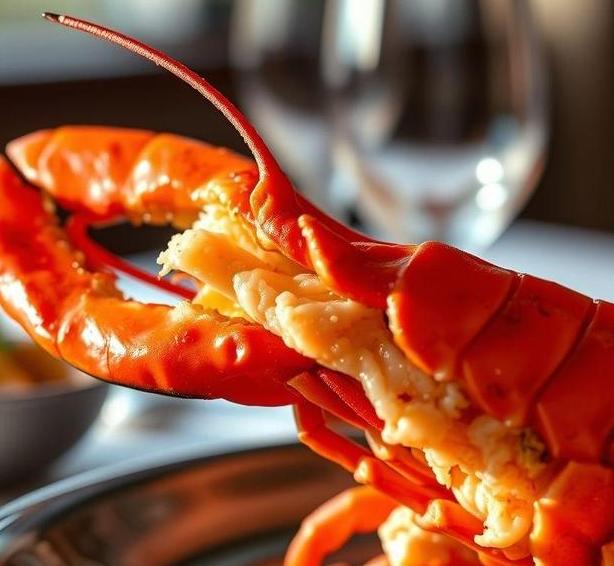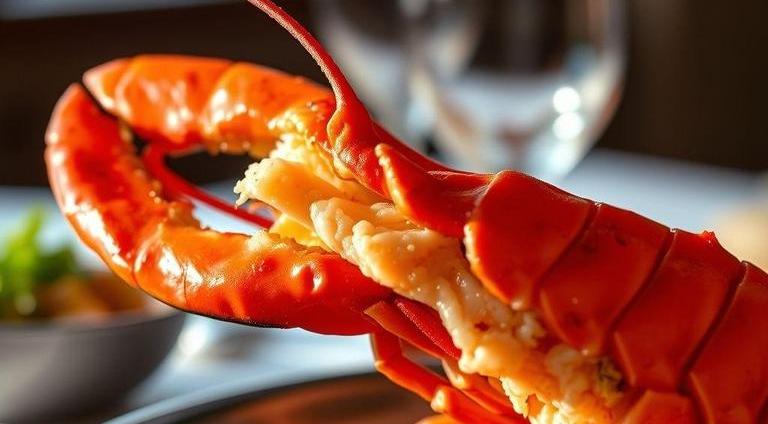Lobster, often considered a luxurious delicacy, is a favorite for special occasions, fine dining, and seafood enthusiasts. Whether it’s a lobster tail grilled to perfection or a lobster roll piled high with sweet, tender meat, there’s no denying that fresh lobster can elevate any meal. But like any fresh seafood, lobster meat is highly perishable, and knowing how to properly store, handle, and identify signs of spoilage is crucial to both safety and flavor.
If you’ve ever wondered how long lobster meat lasts or what to look out for to ensure it’s still good to eat, you’re in the right place. Let’s dive deep into the world of lobster meat storage, spoilage, and safety so you can enjoy your lobster dishes without any worries!
Can Lobster Meat Go Bad?
Yes, lobster meat can absolutely go bad. Like most seafood, it’s highly perishable, and its shelf life depends largely on how it’s handled and stored. Fresh lobster meat-whether from a live lobster or pre-cooked-is sensitive to bacteria and the effects of time and temperature. If not properly refrigerated or frozen, lobster meat can spoil quickly, leading to unpleasant odors, textures, and possible foodborne illnesses.
The natural enzymes in lobster meat begin breaking it down as soon as it is harvested, and bacteria start to grow. Lobster meat is moist and rich in protein, creating an ideal environment for bacterial growth. That’s why, unlike other proteins, you can’t always rely on your senses alone to determine if lobster is still safe to eat-especially if it’s been sitting in your fridge for a while.
Shelf Life For Lobster Meat

The shelf life of lobster meat depends on whether it’s fresh or cooked and how it’s stored. Let’s break it down into categories:
-
Fresh Lobster Meat (Raw)
- Refrigerated (45°F or 7°C): Fresh lobster meat can last about 1-2 days in the fridge.
- Frozen: If you choose to freeze raw lobster meat, it can last anywhere from 6 months to a year, retaining the best quality when frozen quickly after harvesting.
-
Cooked Lobster Meat
- Refrigerated: Once lobster meat has been cooked, it lasts about 3-4 days in the fridge.
- Frozen: Cooked lobster meat freezes well and can last 6 months in the freezer with minimal loss of flavor or texture.
-
Live Lobsters (Before Cooking)
- Refrigerated: If you’ve bought live lobsters, they should be cooked within 24 hours of purchase. They won’t survive much longer in the fridge, and keeping them alive for extended periods can cause them to die and spoil, making them unsafe to eat.
Common Signs Of Spoilage
Identifying spoilage in lobster meat is not always obvious, and it’s easy to miss early signs if you don’t know what to look for. Spoiled lobster meat not only loses its quality but can also become dangerous to eat. Here are the most common signs of spoilage to watch out for:
- Odor: The first and most noticeable indicator of spoiled lobster meat is its smell. Fresh lobster should have a clean, briny, or slightly sweet ocean smell. If it has a sour, rancid, or ammonia-like odor, it’s a clear sign that the lobster meat is no longer safe to eat.
- Color: Fresh lobster meat is typically a translucent white with hints of off-white and a slight pink hue. As it spoils, the meat will become dull and take on a grayish or brownish tint. If the meat has developed an unnatural discoloration, it’s best to throw it out.
- Texture: The texture of fresh lobster meat is firm and slightly moist. If it feels slimy, mushy, or overly soft to the touch, it’s likely that spoilage has occurred. Good lobster meat should bounce back slightly when pressed and should not feel excessively slippery.
- Shell Condition (for live lobsters): If you bought live lobsters and notice the shells are cracked, damaged, or discolored, or the lobster is moving slowly or not moving at all, that’s a sign it’s no longer fresh.
- Taste: If you happen to taste lobster that seems off (though it’s best to not risk it), spoiled lobster will often have a metallic or sour taste, completely unlike the sweet, delicate flavor it should have.
How To Store Lobster Meat?

Proper storage of lobster meat is essential to prolong its freshness and prevent spoilage. Here’s a breakdown of the best ways to store lobster, whether you’re dealing with fresh, cooked, or frozen lobster meat:
-
For Live Lobsters (Before Cooking)
- Refrigerate: If you’re cooking live lobsters, they should be kept in the fridge, ideally in a shallow container, with a damp cloth or paper towels over them to retain moisture. They should never be submerged in water.
- Avoid Storing in Plastic Bags: This can suffocate the lobsters and lead to them dying prematurely.
-
For Fresh Lobster Meat (Raw)
- Refrigerate Immediately: Once the lobster has been removed from its shell, place the meat in an airtight container or wrap it tightly in plastic wrap, and store it on the bottom shelf of your fridge.
- Use Ice: If you want to ensure extra freshness, you can store lobster meat in a container placed over a bowl of crushed ice (make sure the ice doesn’t directly touch the meat).
-
For Cooked Lobster Meat
- Refrigerate: Store cooked lobster meat in an airtight container or a sealed plastic bag. It should be used within 3-4 days.
- Freeze for Longer Storage: If you can’t eat the lobster meat within a few days, you can freeze it. It’s best to wrap it tightly in plastic wrap and aluminum foil or place it in a freezer-safe bag. This helps preserve the texture and flavor for up to 6 months.
-
For Frozen Lobster Meat
- Defrost Safely: Always thaw lobster meat in the refrigerator overnight or under cold running water. Avoid defrosting at room temperature, as this can increase the risk of bacterial growth.
Expert Tips
If you’re a lobster lover looking to enjoy your lobster meat at its peak freshness, here are some expert tips to help you:
- Check Freshness Before Buying: If you’re buying lobster at a market, look for those that are firm to the touch with intact shells and no signs of damage. If buying lobster meat already removed from the shell, ask when it was harvested and look for any off smells.
- Don’t Let Lobster Sit at Room Temperature: Lobster should never be left at room temperature for extended periods, as bacteria grow rapidly in the danger zone (between 40°F and 140°F). If you’ve left lobster out for longer than 2 hours, discard it.
- Label Freezer Bags: If you plan to freeze lobster meat, label the bags with the date so you can keep track of how long it’s been in the freezer. This will ensure you don’t accidentally eat lobster that’s been stored for too long.
- Quick Freeze for Best Results: If you have a lot of lobster meat that you want to store, flash freezing can help preserve texture and flavor. Spread the meat out on a baking sheet and freeze for 1-2 hours before transferring it to a bag or container. This prevents it from clumping together.
FAQs
Can Lobster Meat Go Bad If Left Out?
Yes, lobster meat can go bad if left out at room temperature for too long. It should not be left unrefrigerated for more than 2 hours. After this period, bacteria can rapidly grow, leading to spoilage and potential foodborne illness.
How Long Can Lobster Meat Stay Fresh In The Fridge?
Fresh lobster meat can typically be stored in the refrigerator for up to 1-2 days. After this period, the meat may begin to deteriorate in quality and flavor, and spoilage risks increase.
Can Lobster Meat Go Bad In The Freezer?
Lobster meat can be frozen to preserve its freshness. When properly stored in an airtight container or vacuum-sealed bag, lobster meat can last for up to 6 months in the freezer. However, for the best taste and texture, it is recommended to consume it within 3 months.
How Do You Know If Lobster Meat Has Gone Bad?
Signs that lobster meat has gone bad include an off or sour smell, slimy texture, discoloration, or a change in its usual firm texture. If it’s sticky or mushy, it’s likely spoiled. Always err on the side of caution and discard any lobster meat with these signs.
What Happens If You Eat Bad Lobster Meat?
Eating spoiled lobster meat can lead to foodborne illness, with symptoms such as nausea, vomiting, diarrhea, abdominal pain, and fever. The risks are especially high if the lobster was not stored or cooked properly.
Can You Eat Lobster Meat After It’s Been Frozen And Thawed?
Yes, you can eat lobster meat after it’s been frozen and thawed, provided it was thawed correctly (in the refrigerator or under cold running water). However, the texture may change slightly, becoming softer. It’s important to consume it within 1-2 days after thawing.
How Should Cooked Lobster Meat Be Stored?
Cooked lobster meat should be stored in an airtight container in the refrigerator if you’re not consuming it immediately. It should ideally be eaten within 2-3 days for the best quality and safety.
Is It Safe To Eat Lobster Meat Past Its Expiration Date?
It’s generally not safe to eat lobster meat past its expiration date, as the meat could be spoiled and harmful to your health. Always check for signs of spoilage like odor, discoloration, or texture changes before consuming.
Can Lobster Meat Go Bad In The Shell?
Lobster meat can still spoil when it’s in the shell, although the shell can help protect the meat to some degree. Lobsters in the shell should be consumed within 24 hours if stored in the refrigerator. If you need to store them longer, freezing is the best option.
What Are The Best Ways To Prevent Lobster Meat From Going Bad?
To prevent lobster meat from going bad, store it in the refrigerator immediately after purchase, keeping it in an airtight container. If you’re not planning to eat it within a couple of days, freezing is a good option. Always ensure proper handling and avoid leaving lobster out at room temperature for extended periods.